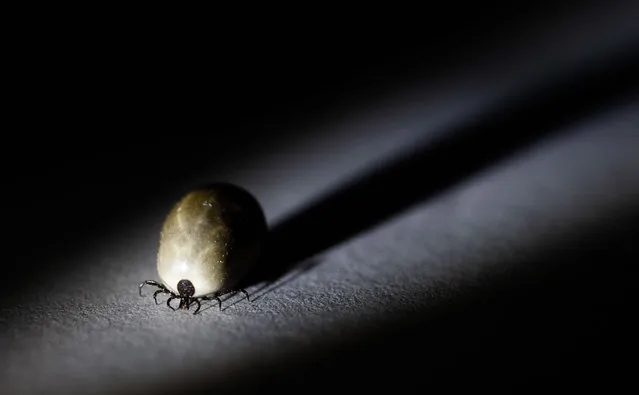
Close-up of a tick in Motala, Sweden on August 9, 2023. (Photo by Jeppe Gustafsson/Rex Features/Shutterstock)
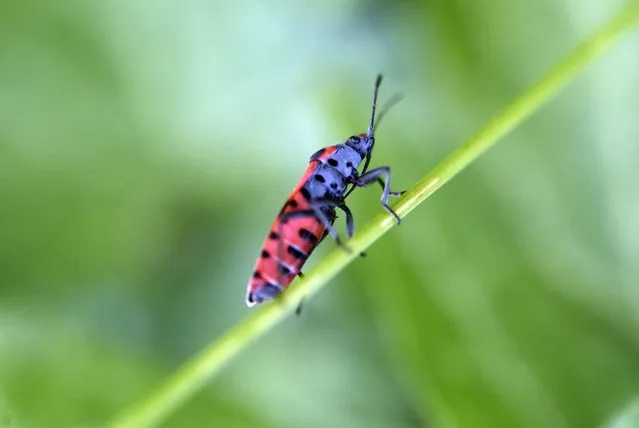
The firebug insect, in Meyronne, Lot, France, on August 23, 2023. (Photo by Pierrot Patrice/ABACA Press/Rex Features/Shutterstock)
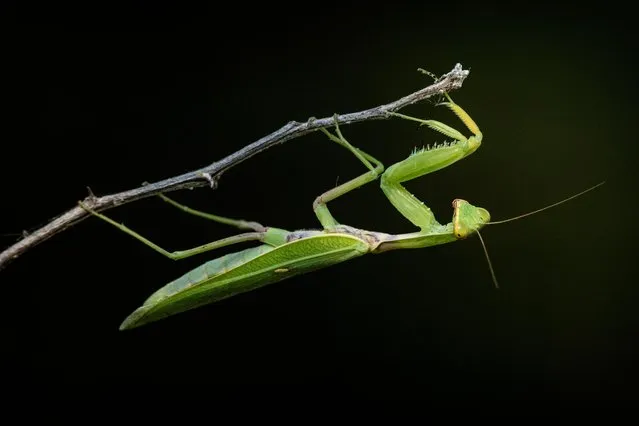
A European Mantis is seen on a tree branch in Bursa, Turkiye on August 30, 2023. As of August, the mantis exhibit heightened activity in their search for partners. An exceptional characteristic of mantis is that females attack and cannibalize the males. They also hunt a range of animals including reptiles and insects, therefore, very helpful for agriculture as they can act as an effective form of organic pest control. (Photo by Alper Tuydes/Anadolu Agency via Getty Images)
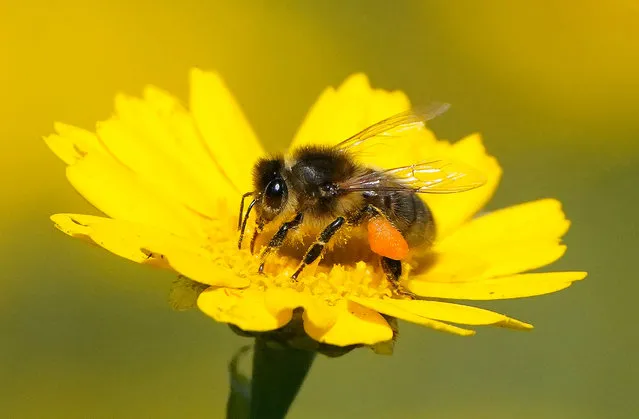
A bumble bee covered in Pollen pictured in Newbridge Co Kildare, Ireland on Sunday, August 20, 2023. (Photo by Niall Carson/PA Images via Getty Images)
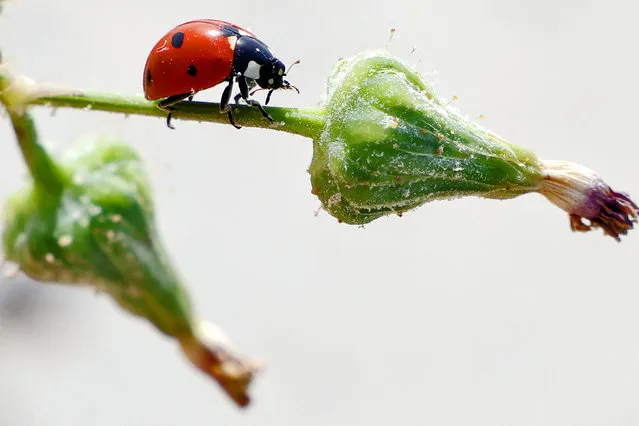
A ladybug lies on the stem of a blooming flower at a park in Kuwait City on April 6, 2023. (Photo by Yasser Al-Zayyat/AFP Photo)
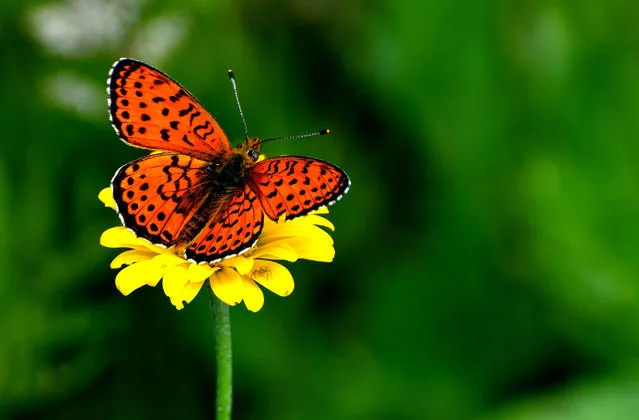
A view of a butterfly on a flower after a rainy day at the Sarikamis ditrict of Kars, Turkiye on July 8, 2023. (Photo by Huseyin Demirci/Anadolu Agency via Getty Images)
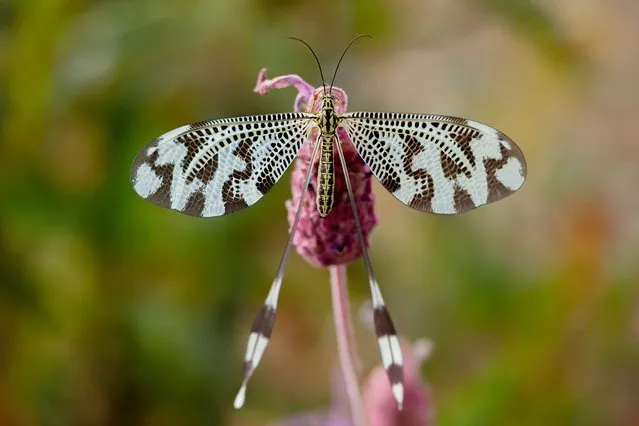
A Nemoptera bipennis perches on a Spanish lavender flowering plant in the mountain range of Guadarrama in Madrid, Spain, 25 May 2023. Nemoptera bipennis is a species of slow flying insect found in Spain, Morocco and South of France. (Photo by Annais Pascual/EPA/EFE)
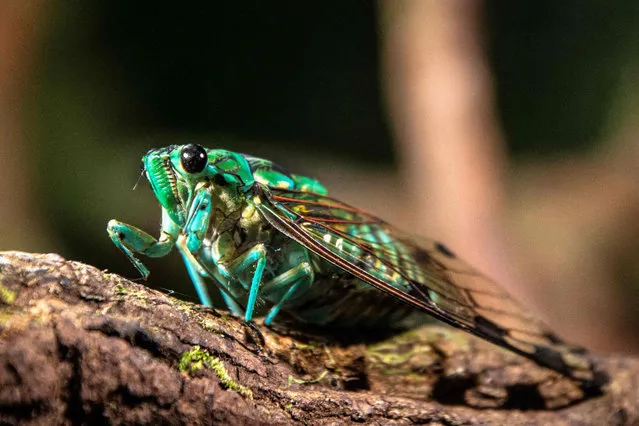
A cicada is seen by the Rio Celeste river in the Volcan Tenorio National Park in Alajuela Province, in northern Costa Rica, on May 24, 2023. The Maleku indigenous people claim to be part of the Costa Rican ecotourism circuit in the Tenorio Volcano National Park – which they consider to be their own by ancestral right – and where new Maleku entrepreneurs offer ecotourism circuits based on their cosmovision, since visitors not always reach their community Palenque Margarita. (Photo by Ezequiel Becerra/AFP Photo)
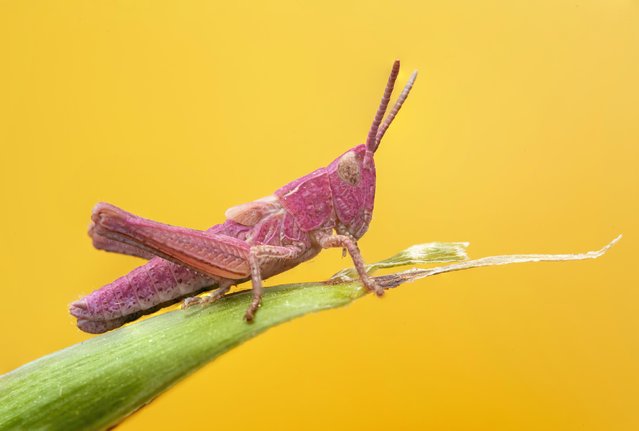
A pink grasshopper is spotted at the Messingham Sand Quarry in Scunthorpe, Lincolnshire, UK in the second decade of July 2023. The dazzling creature is incredibly rare, with experts estimating that a person has a chance of about 1 per cent of seeing one in their lifetime. (Photo by Calvin Taylor Lee/Animal News Agency)
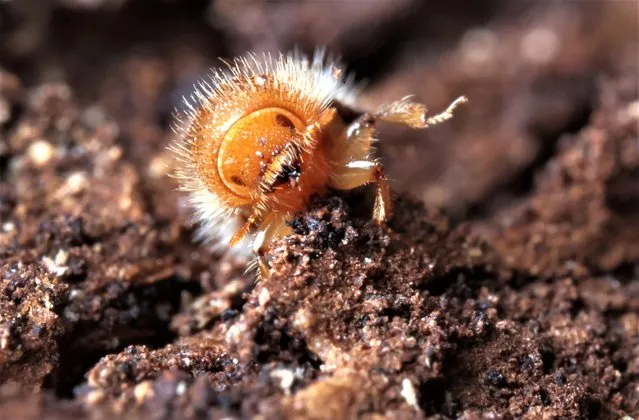
A young European spruce bark beetle (Ips typographus) walks along the inner side of bark pulled from an infested spruce tree in the state of Saxony on July 06, 2023 near Falkenau, Germany. Forestry officials, particularly in Saxony, Bavaria and Baden-Wurttemberg, are observing a surge in bark beetle populations due to the recent unseasonably dry and hot weather of May and June. The beetles, which bore into the bark of spruce trees and stop the trees' needed circulation of water and nutrients, can devastate spruce forests. “It’s a calamity”, said one forest ranger, who said bark beetle infestations since 2018 have been worse than in previous years, a phenomenon forestry officials attribute to climate change. The impact is two-fold, because hot, dry weather also weakens the trees by reducing their ability to generate sap, making them less able to fend off bark beetle attacks. Germany has high concentrations of spruce forests in certain regions, where they were planted over centuries for commercial use in the lumber industry. (Photo by Sean Gallup/Getty Images)
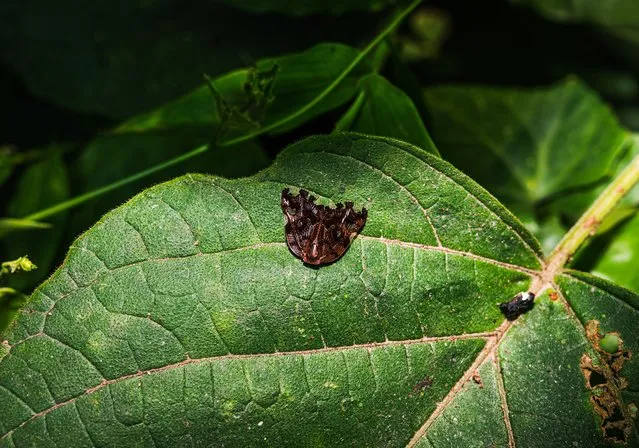
This photo was taken in a forest at Tehatta, West Bengal, India on May 7, 2023. Black planthopper or Ricaniid Planthopper (Ricania speculum) is a species of planthoppers belonging to the family Ricaniidae found in low-elevation Mountains and prefers dark environments of China, India, Indonesia, Japan, Korea, Philippines, and Vietnam. Recently, it has been accidentally introduced in northern Italy. This species is considered a major agricultural pest for several crops in tropical and subtropical areas (apples, coffee plants, oil palms, Citrus species, etc. These insects feed on sap that they suck from the leaves of the host plants. Ricania speculum has a single generation per year. The eggs overwinter in the bark of the branches waiting for the spring hatching. (Photo by Soumyabrata Roy/NurPhoto via Getty Images)
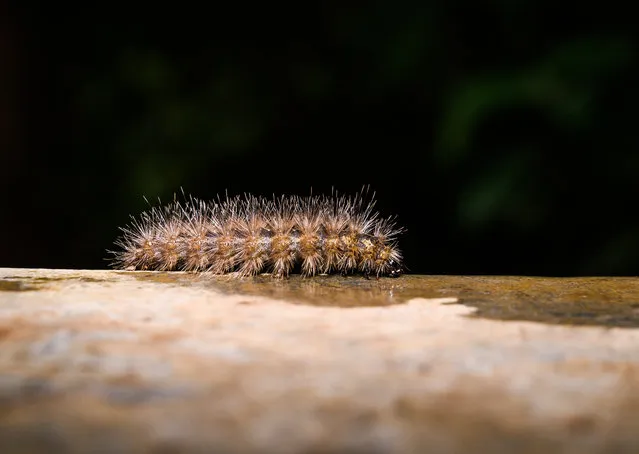
A fuzzy hairy caterpillar of tiger moth others have gone hiking on the walls to reach the scanty water lying on the wall at Tehatta, West Bengal, India on June 11, 2023. The larva or caterpillar of Arctiinae or tiger moth family of Erebidae (superfamily Noctuoidea) does not drink water. They normally obtain sufficient fluids from the food plants that they eat. This caterpillar benefits from rain or other moisture reaching them, they use moisture to keep them from drying out too much. This caterpillar has a tendency to wander right before they pupate or become chrysalis. This caterpillars' defense system at the tip of each defensive hair is a microscopic barb with a weakened ring at the base, allowing the barb to easily break off in the skin of any animal that grabs onto them can be a cause of Lepidopterism. (Photo by Soumyabrata Roy/NurPhoto via Getty Images)
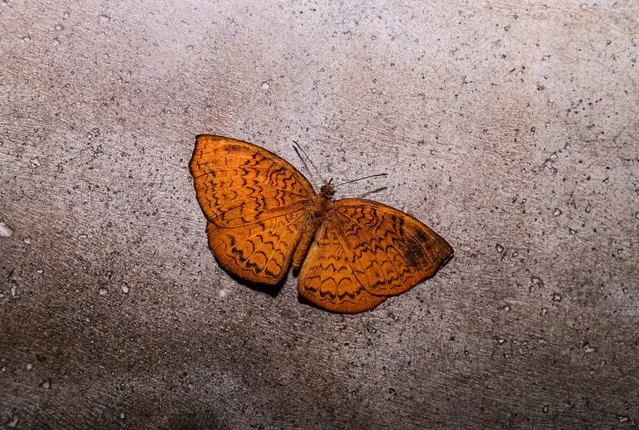
A common castor butterfly is injured and lying on the ground after being hit by a ceiling fan, and efforts are being made to rescue it and release it into nature at Tehatta, West Bengal, India on August 9, 2023. The common castor (Ariadne merione) is an orange butterfly is found in South and Southeast Asia. Their wingspan ranges between 30-35 mm. Like others in the family Nymphalidae, their front two legs are small and unused, effectively making them four-legged. These smaller appendages are covered with long hairs, giving them the characteristic brush look. Rarely, this species of butterfly is full-bodied. Sometimes they can be seen sipping plant sap. Their main food is the extract from the fruits that have fallen and rotted on the ground. (Photo by Soumyabrata Roy/NurPhoto/Rex Features/Shutterstock)
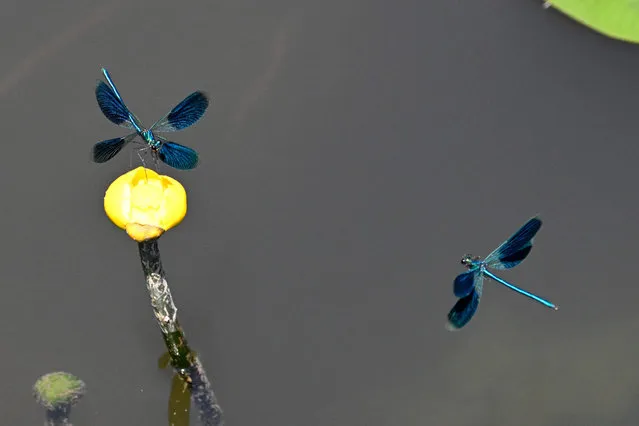
Dragonflies (Calopteryx virgo) fly over a water-lily in La Gacilly, western France, on June 1, 2023 (Photo by Damien Meyer/AFP Photo)
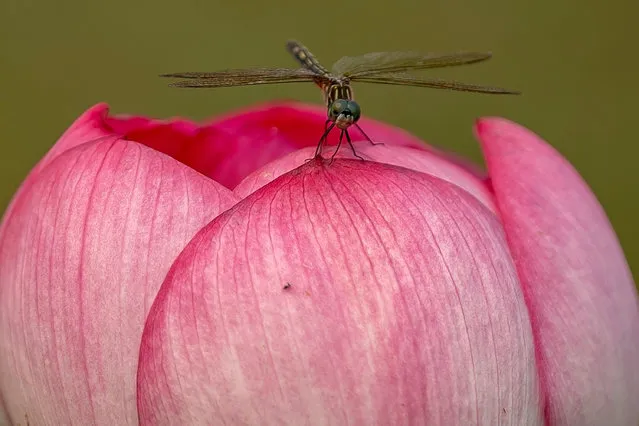
A dragonfly sits on a Lotus flower during the Lotus and Water Lily Festival at Kenilworth Aquatic Gardens in Washington, DC, on July 17, 2023. The festival, put on by the National Parks Service, occurs every year when the flowers are at peak bloom. Though the Lilies and Lotuses are currently in peak bloom, the flowers tend to close as the sun grows more intense and the temperature rises. (Photo by Stefani Reynolds/AFP Photo)
05 Sep 2023 03:43:00,
post received
0 comments
